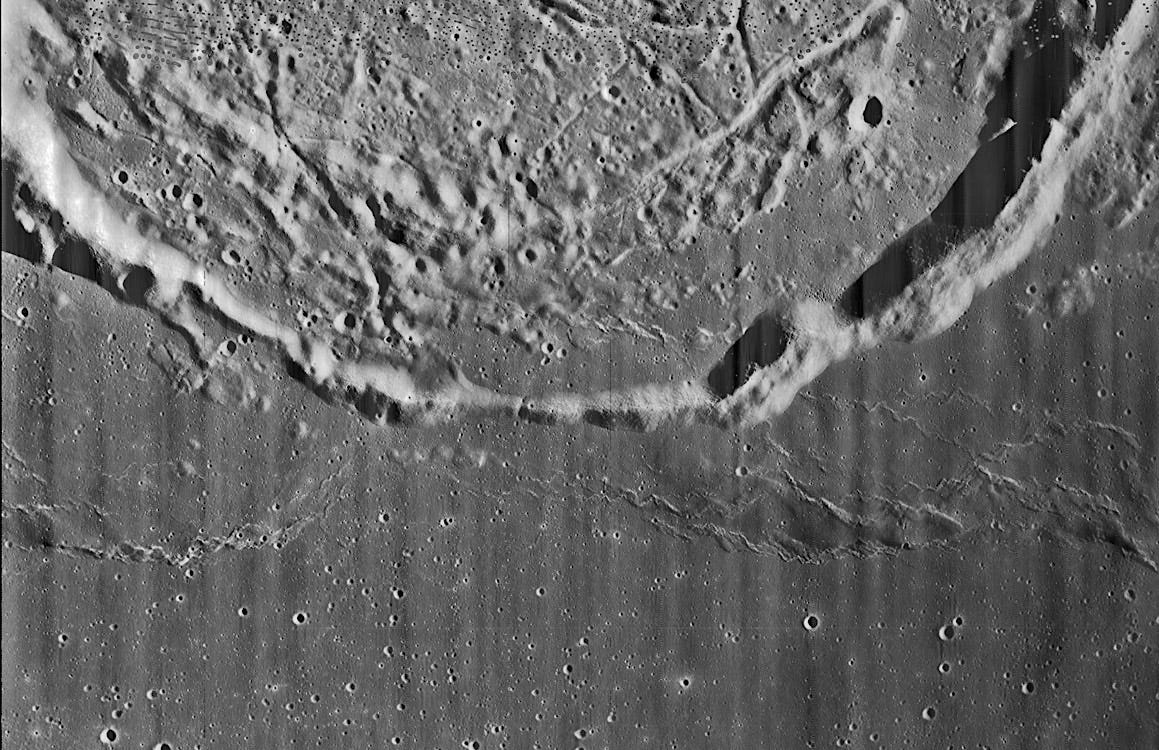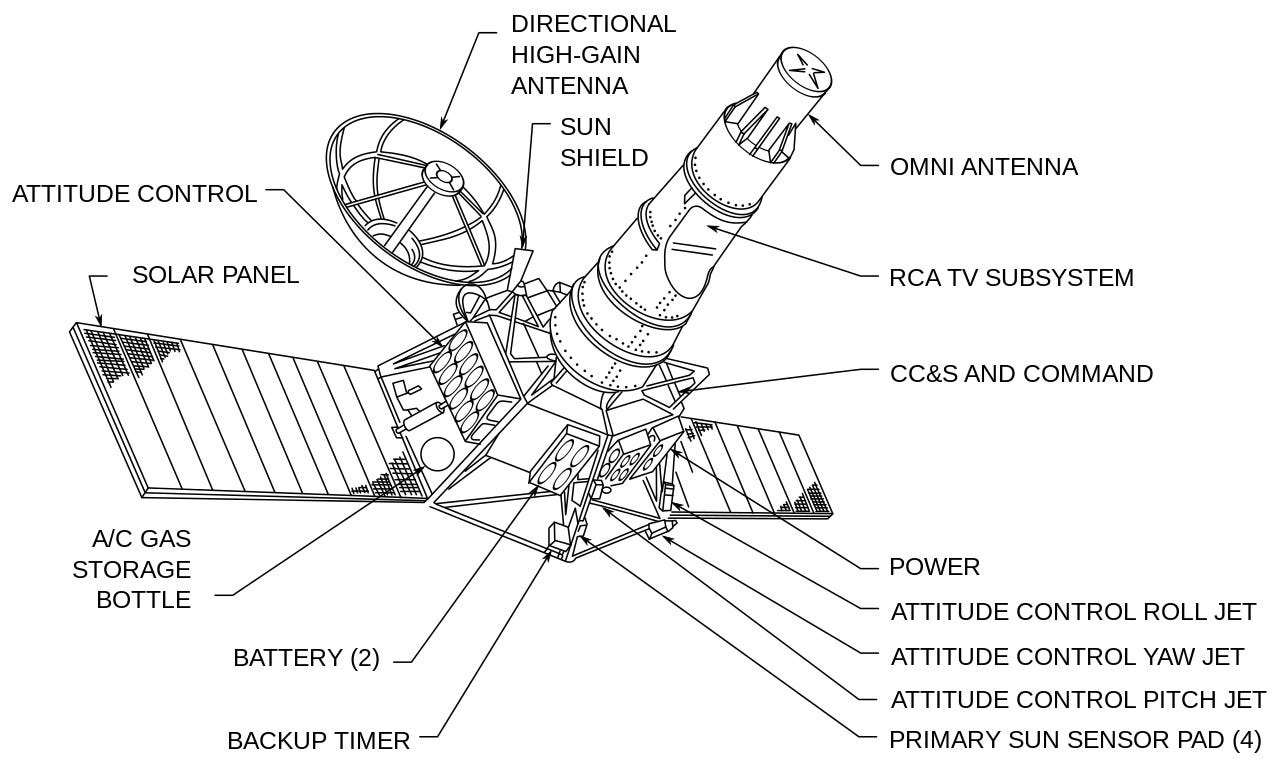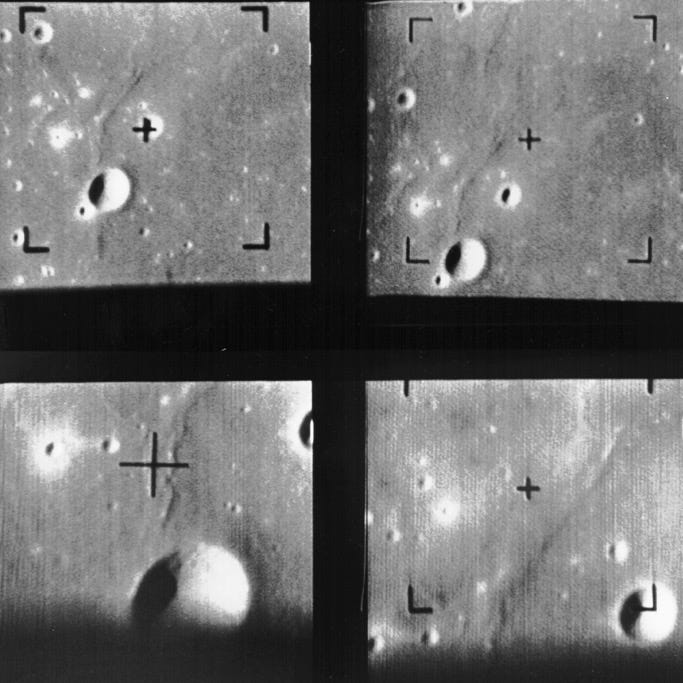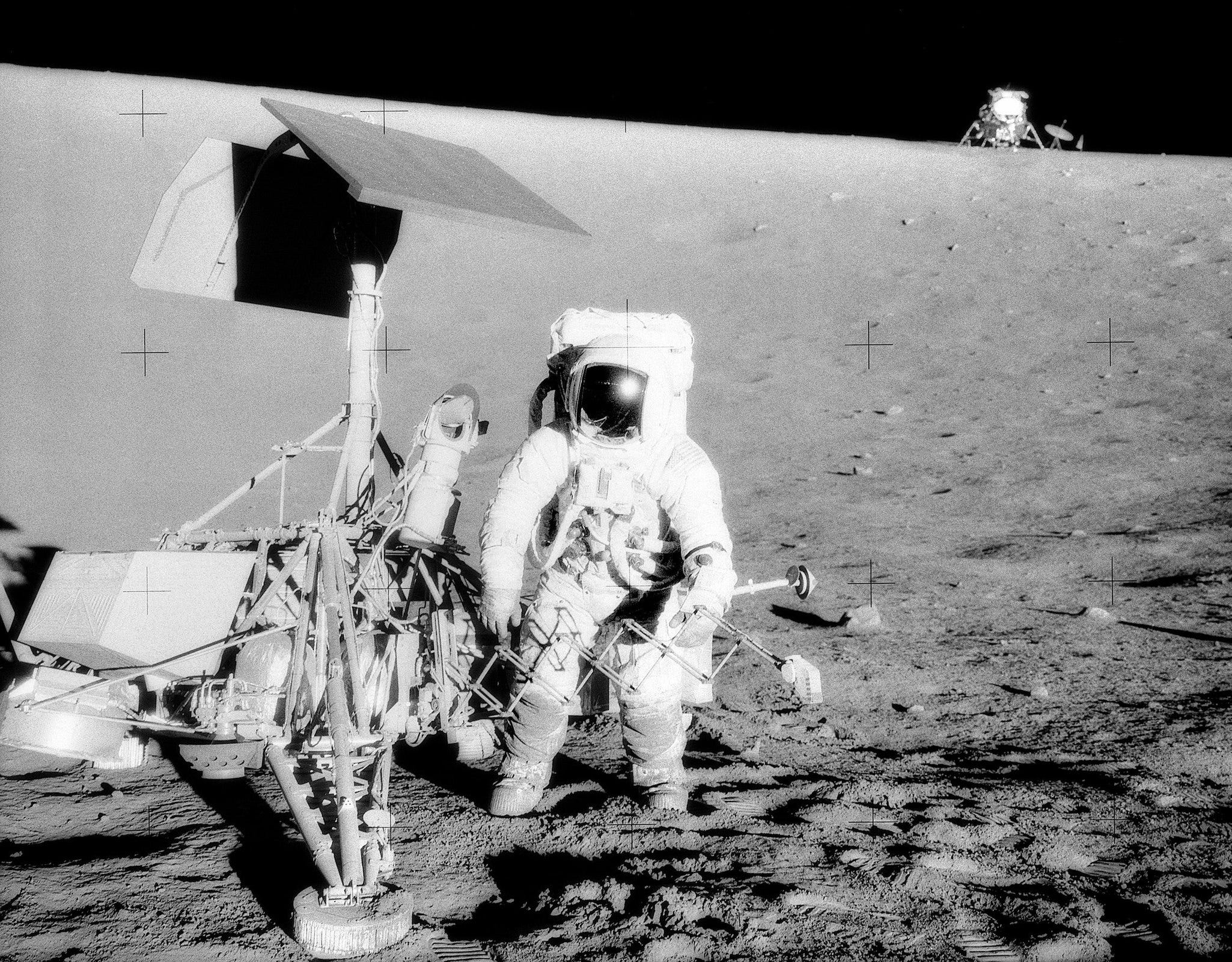The time NASA figured out that our Moon is cratered all the way down
And a parallel to what we’re building now as we return to the Moon.
For NASA to safely land 12 astronauts on the Moon with the Apollo missions, a lot had to go right. But to even attempt Apollo, the agency needed to know what our Moon is like up close. Worrying about the nature of the lunar surface and soil may sound mundane now but it really was a big unknown back then. For instance, you do not want to land astronauts on the Moon only to have the lander’s legs and engines sunk and stuck in soil.
To ensure that astronauts could safely land on the Moon, NASA had to first map the terrain at various regions of interest at local scales, identify the frequency of hazardous rocks and boulders within, and determine the physical nature of the lunar soil, based on all of which the Apollo landers and missions would be designed.
The trouble was that back then the key way to capture images of our Moon was via big telescopes on Earth, which couldn’t discern much at the required local scales. With the advent of the space age, launching spacecraft to image the lunar surface from orbit was possible. Between 1966 to 1967, NASA sent five orbiters under the “Lunar Orbiter” program to make a global map of the Moon with a resolution of roughly 60 meters—10 times better than Earth-based observations. Their more than 1600 high-quality photographs allowed NASA to identify many locally smooth landing site candidates for the robotic Surveyor landing missions as well as Apollo.

While Lunar Orbiter photographs provided decent local as well as wider views of lunar regions for context, they weren’t good enough by themselves for getting lander-scale imagery that would ensure safe touchdowns for future astronauts. For that in particular, NASA had already launched the Ranger series of spacecraft in the prior years. These would intentionally smash into the Moon.

Each Ranger spacecraft was equipped with a TV camera setup to send images to Earth in near real time while descending towards the Moon. The resolution of images the Rangers could ultimately capture before impact was at least 10 times better than possible from orbit at the time. It’s only now that NASA’s Lunar Reconnaissance Orbiter can image areas at a best resolution of 0.5 meters/pixel while India’s Chandrayaan 2 orbiter can do a best of 0.25 meters/pixel.
When Ranger 7, the first successful mission of the Ranger Program, took the fall in 1964, everyone was surprised. Vast, smooth plains on the Moon which seemed welcoming were full of craters up close.

I made a video from Ranger 7’s camera shots, containing images captured from 2000 kilometers above the Moon’s surface down to just 500 meters after which the spacecraft crashes.
The Ranger 8 and 9 missions all but confirmed the same trait—that the Moon is riddled with craters. The more than 15,000 high-resolution photographs sent to Earth by the Ranger missions thus provided great complementary data to the Lunar Orbiters and helped NASA select safe landing regions for the Apollo missions. The NASA Ranger missions were thus literally and figuratively a smashing success.
Then there was Surveyor, the last robotic spacecraft program to precede Apollo. Between 1966 to 1968, the program saw five successful robotic soft landings, four of which were in near-equatorial landing sites considered for Apollo. The fact that the Surveyors were upright was a relief in itself but the landers helped much more.
The Surveyors obtained more than 80,000 photographs of the Moon’s surface up to 1 millimeter resolution, which to no one’s surprise by that point also showed numerous small craters scattered all over. The landers also carried various instruments and a surface sampler, which helped determine the mechanical properties of the lunar soil. This was crucial in planning the large Apollo lander designs as well as the activities astronauts would conduct during the missions.

Aside: To the delight of a scientific mind, the trend of finding craters at smaller and smaller scales on the Moon didn’t end with the Surveyors. Closeup images of rock samples brought back from Apollo missions revealed that our Moon is cratered even on microscopic scales. It really is cratered all the way down.

Looking ahead
NASA could plan and execute safe landings for Apollo astronauts thanks to the successes of the Lunar Orbiter, Ranger, and Surveyor programs, each of which filled major gaps in our understanding of the Moon’s surface.
Of course, today we know much more about our Moon. Modern lunar orbiters haven’t had to be concerned about accidentally succumbing to the effects of the Moon’s lumpy gravity. All recent lunar landing attempts have benefitted in mission planning due to abundantly available high-resolution imagery from the likes of the Lunar Reconnaissance Orbiter. Modern rovers, those already sent or ones being built, leverage not only high-resolution orbital imagery for planning their traverses but the known physical nature of the lunar soil for their very conceptions.
Luckily, as would be fitting for a return to our Moon, we haven’t opted for a mere theatrical repeat of Apollo. Thanks in major part to the discovery of water ice, space agencies and organizations globally have chosen the lunar poles—South in particular—as the destination to build for. With it come new challenges and new unknowns. For instance, we have no idea of the true nature of the water-ice-containing lunar soil inside polar permanently shadowed regions. How will these cryogenic locations treat our hardware? Will drills work (as intended)? How about our space grade electronics?
This is why we’re taking a step-by-step approach, akin to the pre-Apollo programs, that begin with building a set of resilient exploration systems that can and must land in rocky terrain with precision, operate in regions largely deprived of sunlight, and be mobile in cryogenic environments. Nearly everything about these systems will be exotic even for a space mission, from their sheer mobility to their level of robustness. Maybe future generations building generalized technologies to explore and live across the Solar System take these technologies as a given but this is how it will all start.
→ Browse the Blog | About | Donate ♡
